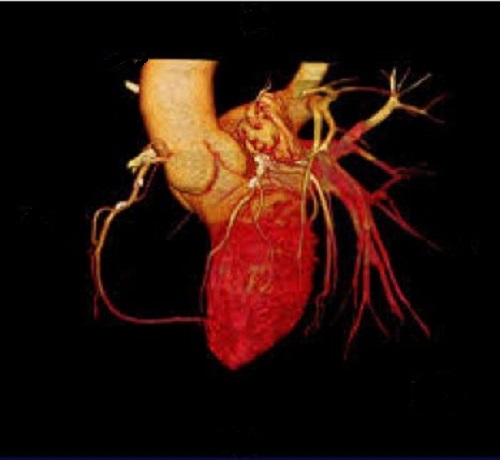Best Facilities Services At Your Door Step
CT Angiography
Price : INR 10000/-
Coronary CT angiography (CTA) is the use of computed tomography (CT) angiography to assess the coronary arteries of the heart. The subject receives an intravenous injection of radiocontrast and then the heart is scanned using a high speed CT scanner, allowing physicians to assess the extent of occlusion in the coronary arteries, usually in order to diagnose coronary artery disease.
CTA is superior to coronary CT calcium scan in determining the risk of Major Adverse Cardiac Events (MACE).Faster CT machines, due to multidetector capabilities, have made imaging of the heart and circulatory system very practical in a number of clinical settings.The faster capability has allowed the imaging of the heart with minimal involuntary motion, which creates motion blur on the image, and has a number of practical applications.[2] It may be useful in the diagnosis of suspected coronary heart disease, for follow-up of a coronary artery bypass, for the evaluation of valvular heart disease and for the evaluation of cardiac masses.

HumanCare Path Labs: Your Trusted Partner in Healthcare and Diagnostics
Experience Precision and Care
At HumanCare Path Labs, we are committed to providing accurate and timely diagnostic services to our patients in Delhi and NCR. With state-of-the-art technology and a team of highly skilled professionals, we offer a comprehensive range of diagnostic tests to cater to your diverse healthcare needs.
Why Choose HumanCare Path Labs?
- State-of-the-Art Technology: We utilize the latest diagnostic equipment to ensure accurate and reliable results.
- Expert Team: Our experienced pathologists and technicians are dedicated to delivering the highest quality care.
- Convenient Locations: Our multiple clinics across Delhi and NCR make it easy to access our services.
- Quick Turnaround Time: We prioritize timely results to help you make informed decisions about your health.
- Patient-Centric Approach: We are committed to providing a comfortable and hassle-free experience for all our patients.
Our Range of Services
HumanCare Path Labs offers a wide range of diagnostic services, including:
- Blood Tests: Comprehensive blood tests to assess overall health, including blood sugar tests, cholesterol tests, liver function tests, kidney function tests, and more.
- ECG: Electrocardiogram (ECG) tests to diagnose heart conditions and abnormalities.
- MRI Scans: Magnetic Resonance Imaging (MRI) scans for detailed imaging of internal organs and tissues.
- PET Scans: Positron Emission Tomography (PET) scans for detecting cancer and other diseases.
- Holter Monitoring: Continuous monitoring of heart rhythm over 24 hours.
- NCV Tests: Nerve Conduction Velocity tests to assess nerve health.
- 24-Hour Blood Pressure Monitoring: Continuous monitoring of blood pressure over 24 hours.
- EMG Tests: Electromyography tests to assess muscle health and nerve function.
- Sleep Studies: Polysomnography to diagnose sleep disorders like sleep apnea.
- EEG Tests: Electroencephalography to measure brain electrical activity.
- Pulmonary Function Tests: To assess lung function and diagnose respiratory conditions.
Why Regular Diagnostic Tests are Important
Regular diagnostic tests are crucial for maintaining good health. They can help detect potential health problems early, allowing for timely intervention and treatment. Some of the benefits of regular diagnostic tests include:
- Early Detection of Diseases: Regular check-ups can help detect diseases like cancer, diabetes, and heart disease in their early stages.
- Monitoring Chronic Conditions: For people with chronic conditions, regular tests can help monitor disease progression and adjust treatment plans as needed.
- Assessing Overall Health: Comprehensive blood tests can provide insights into overall health, including nutritional deficiencies, hormonal imbalances, and other underlying conditions.
- Peace of Mind: Knowing your health status can provide peace of mind and help you make informed decisions about your lifestyle and healthcare.
Book Your Appointment Today
To get your tests done, please fill out the form on contact page, call our front desk on below given numbers, or simple visit the center directly. Our friendly staff is ready to assist you with any questions or concerns you may have.
Visit Us
J-17, Lower Ground Floor, Kalindi Kunj Rd, Jamia Nagar, Okhla, New Delhi 110025
+91 62040 63485
+91 80762 50713
+911145665176
info@hcpathlabs.com
Opening Hours
Mon - Sat: 8:00 am - 6:00 pm Sundays: 8:00 am - 1:00 pm
CT angiography test, coronary CT angiography, cardiac CT scan, CT angiogram, computed tomography angiography, CT angiography procedure, CT angiography for heart, CT angiography cost, CT scan for blood vessels, coronary artery imaging, CT angiography benefits, CT angiography uses, vascular CT scan, CT angiography preparation, CT angiography risks
